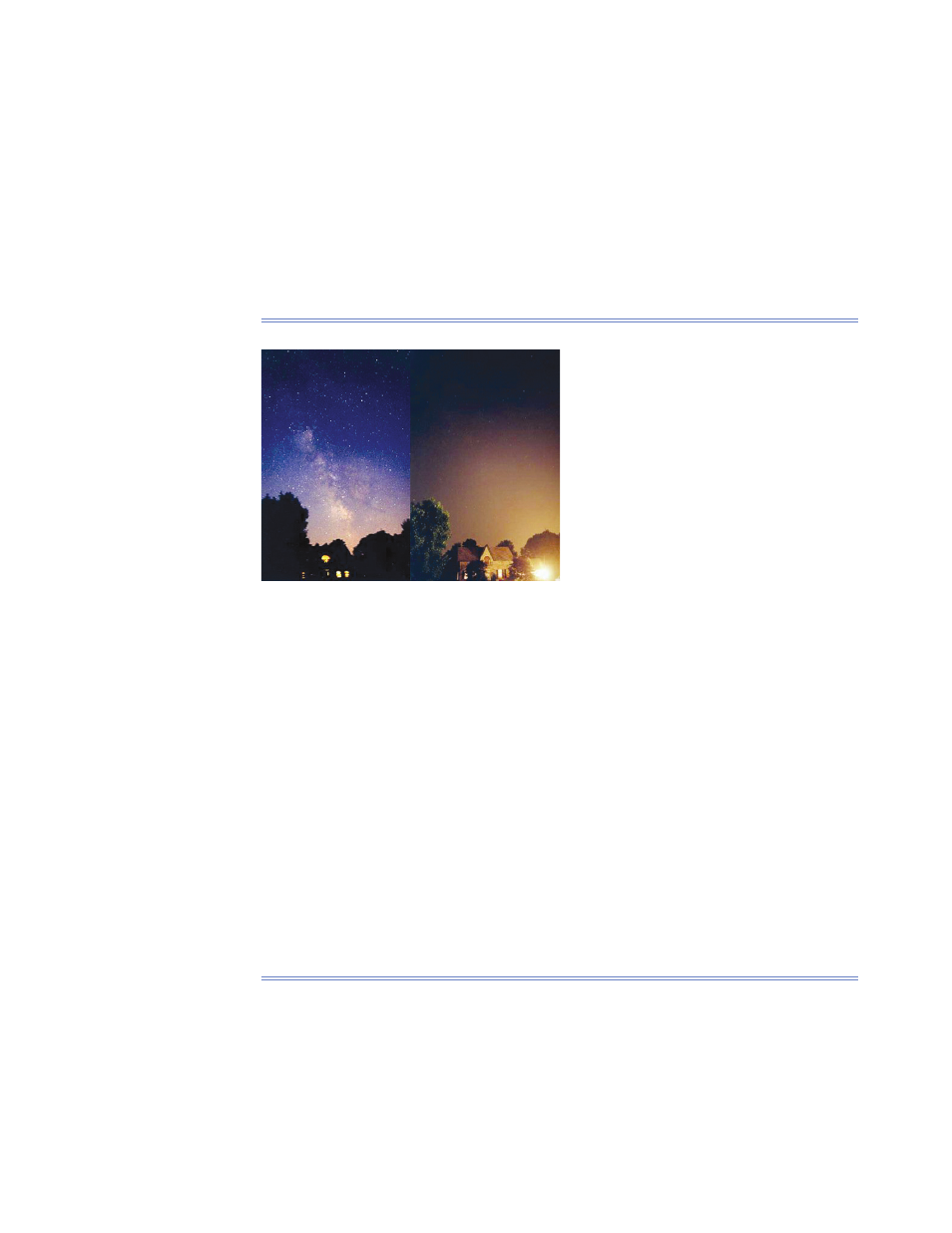Retrotec USACE User Manual
Page 222

D92 ENERGY & PROCESS ASSESSMENT PROTOCOL
best analysis for the cost and remedy is to have a qualifi ed electrician review
the site lighting and trace the circuiting to know what types of devices can be
used to control the outdoor lighting. The best time clocks are either astronomi-
cal or digital, and most can incorporate photocells. Preferred strategies are
photocell on/off or astronomical on/off control, to make sure the timers work
with the latitude and daylight savings time.
D.5.6 Using Outdoor Lighting That Lights up the Sky Instead of
Lighting the Streets and Walkways (Ineffi ciency)
Figure D147. Scene with controlled light
not aimed at the sky (left); outdoor lighting
aiming at the sky, washing out the starlight
and wasting energy (right).
The primary function of outdoor lighting is for enabling people to see when
driving or walking at night. Outdoor lighting fi xtures are generally designed
for both decorative purposes and to provide safety on streets and walkways.
In both cases, the light from the fi xture must strike the surface of an object
and then refl ect into the eye of an observer to be effective. Outdoor lighting
that lights up the sky produces no useful effect and should be avoided. In fact,
outdoor lighting aimed at the sky can have negative impacts, including light
pollution and light trespass (lighting up a neighbor’s property).
The most effective outdoor lighting is delivered by lighting fi xtures that are
called “cutoff” fi xtures (Figure D147). These light fi xtures direct the lighting
toward the pathway or street and have refl ectors that make them very effi cient.
For outdoor lighting installations that are wasting energy lighting up the sky,
look into retrofi t kits that might add a refl ector and more effi cient light sources,
or replacement fi xture heads that can convert the fi xture to cutoff optics.
D.5.7 Using Incandescent “A” lamps (Ineffi ciency)
Incandescent “A” lamps should be replaced with pin-based compact fl uores-
cent lamps with electronic ballasts to save approximately $10 annually per
lamp (Figure D148). When pin-based compact fl uorescent lamps (CFLs)
cannot be used, screw-in CFLs are still a better alternative to incandescent
lamps, saving $7 annually per lamp of typical wattage. CFLs have very good
color and add versatility in lighting design. 2700K CFLs mimic the color
